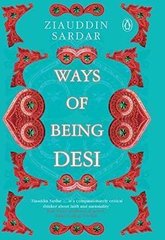Title:
Not Just an Accountant – The Diary of the Nation’s
Conscience Keeper
Author:
Vinod Rai
Publisher:
Rupa, 2014 (First)
ISBN:
9788129134615
Pages:
267
When Indians voted in the 2014 general elections, the result
was on expected lines. Anyone with even a cursory grasp of the political
situation in the country was confident that the ruling coalition would bite the
dust. The antagonism was a consequence to exposure of blatant corruption in the
government led by Manmohan Singh, India’s foremost economist. Though himself a
man of unimpeachable integrity, his clout in the party and government was extremely
weak. He owed his place as prime minister solely due to his docility and
subservience to the whims of the Nehru family who saw in him nothing more than
a presentable figure good for keeping the seat warm till Rahul Gandhi, the
youngest scion of the dynasty, could cut his political teeth. Ministers in the
alliance parties treated him as a man to be respected and seen to be obeyed,
but never to take seriously in their own decision-making process. Huge deals
involving financial swindling came to light in the ten years Singh presided
over the administration. Some of it included the 2G spectrum scandal,
coal-block allocation scam, the Commonwealth Games deals, allocation of natural
gas exploration blocks and purchase of unnecessary aircraft for the national
carrier, Air India. The money wasted in these shocking scams ran into tens of
thousands of crores of rupees. The investigations into some of the deals are
still on. These irregularities saw the light of the day through performance
audits conducted by the supreme audit institution in India – the Comptroller
and Auditor General (CAG). Vinod Rai was the CAG at that time, who stood with
his courage and conviction against pressure from all quarters. Rai is a former
IAS officer of Kerala cadre who served as the CAG of India for five years from
2008 to 2013. He is widely considered as the symbol of the anti-corruption
movement and is credited with having turned the office of CAG into a powerful
force for accountability and transparency in contemporary India. This book is
his reminiscences of the days when he exposed the black deals involving
politicians.
Rai gives a brief narration of his career in the Indian
Administrative Service (IAS) in various capacities in the states as well as the
centre. These chapters are quite interesting to the readers before the main
action begins as the CAG, at which point it loses its appeal. The book is very
particular in introducing the relevance of that constitutional position. The
government auditor, or CAG, provides a critical link between the executive,
parliament and the larger community of citizens. His objective is to draw the
attention of the executive to the loopholes, lacunae, the acts of omission and
any violation of established policy guidelines (p.35). The author also examines
the types and differences of audit such as financial audit, compliance audit
and performance audit, the third one only the CAG is allowed to conduct. There
is a discontinuity in the narration here. From his days in the IAS, the story
is catapulted straight into life as the CAG. Here too, the actions and analyses
are sidelined to reply to some of the criticisms faced by the final audit
report. The bureaucrat in the author rears his head when he takes askance at
the Media running news stories on reports supposedly leaked from the auditor’s
office, whereas he advocates transparency and scrutiny for all departments of
the executive.
2G scam rocked Indian politics in 2011. Licenses were
reportedly issued to telecom operators on first-come-first-serve basis and foul
play was suspected in receiving requests from the companies. A full disclosure
of the nuances of the audit is given by the author. Each license, worth around
8000-9000 crores, was allotted for a paltry sum of Rs. 1658 Crores. The total
loss to the exchequer is estimated at Rs. 1.76 lakh crores. Such an
astronomical figure was the butt of intense criticism from sections supportive
of the government. However, the author reminds us that while the fact of loss
to the nation can hardly be denied, the quantum of loss can be debated. The CBI
pegged the loss at Rs. 30000 crores, which itself is a startlingly large
figure. Rai specifically remarks that Manmohan Singh was indeed aware of what
was going on, but preferred to look the other way and adopt a hands-off
approach at this naked loot of the country. A separate chapter is reserved for
each scandal.
This book is tiresome to read on account of the uninspiring
form of narration. Instead of detailing the clever ways in which foul play was
allowed to go on, the author chooses to list out arguments in favour of the
findings and calculations arrived at in the report. A large share is reserved
to reply to allegations of the CAG’s partisanship. As such, the description
descends to the readability of an affidavit a party submits before a court of
law. The final chapter lets out some homilies on the way forward for a new
India of the GenNext. Excellence in every sphere of activity, accountability in
responsible institutions and probity in all walks of life are recommended by
Rai as the leading beacons of the society.
This book is graced with a Foreword by Dr. A P J Abdul
Kalam, former President of India and a luminary of twenty-first century India.
He exhorts the readers to instill righteousness in the heart which translates
to beauty in character. In a nutshell, it characterizes this book about
accountability, transparency and ethics in administration and leadership.
Extensive reproductions of dates, figures and bureaucratic reports turn the
readers away from the main thread. The last nail in the coffin is the presence
of several appendices running into 45 pages that are nothing but photocopies of
letters and memos sent by various ministries.
The book is not recommended.
Rating: 2 Star


















































